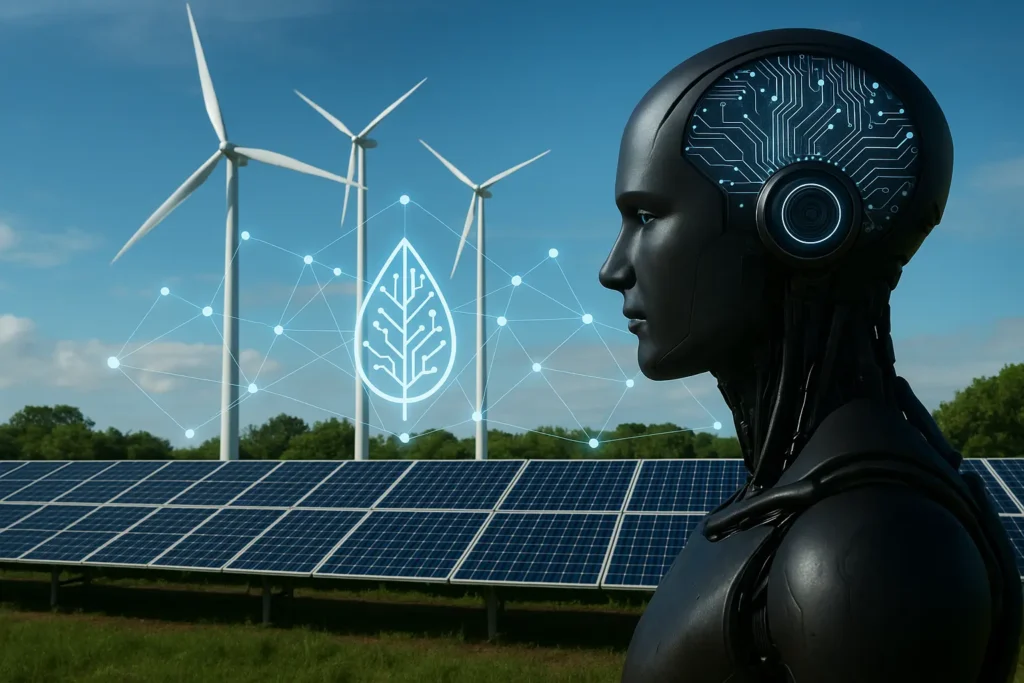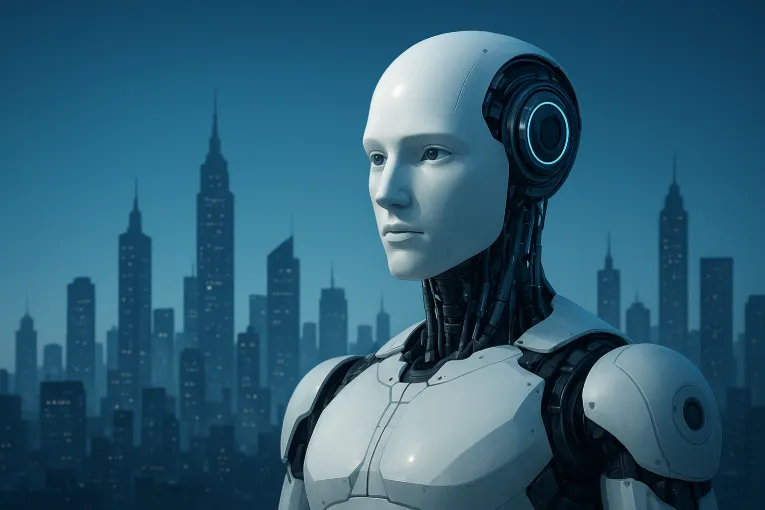Artificial Intelligence (AI) is increasingly contributing to the global transition to renewable energy. Whether optimizing the renewable energy sector or forecasting energy production, AI is making the clean energy industry smarter, faster, and more efficient.

What role does AI play in renewable energy?
Applications of AI in renewable energy
AI refers to computers that can learn from data and make decisions with minimal human interaction. In the field of renewable energy, AI is used to process vast amounts of data in real-time to solve key challenges including:
- Solar and wind power generation prediction
- Balancing demand and supply on the grid
- Enhancing energy storage operations
- Fault detection in power systems
How Does AI Support Wind and Solar Power?
One of the most challenging aspects of renewable energy like wind and solar power is that they are weather-dependent and intermittent. AI models, on the basis of past and current weather patterns, can accurately predict:
- How much solar power will be generated tomorrow
- When the wind turbines will supply maximum power
- How to resize the grid to accommodate changes
These forecasts help grid operators make more informed decisions and avoid blackouts.
AI and Energy Storage
AI is also revolutionizing Battery Energy Storage Systems (BESS) by forecasting:
- When to save electricity
- When to release it
- How to reduce battery deterioration and achieve maximum lifespan
This is a good method of synchronizing with solar and wind power that are not producing electricity hour by hour.
Smart Grids and Energy Efficiency
AI enables intelligent grids that learn from consumer behavior. For example:
- AI can also control home heating or cooling based on usage patterns
- Industrial systems automatically minimize wastage of energy
- Grid operators are able to balance loads efficiently without human oversight
All this leads to increased energy efficiency, lower costs, and lower emissions.
Real-World Examples
- Google DeepMind helped Google data centers reduce their energy consumption by 40% using AI-based cooling techniques.
- Siemens uses AI to perform predictive maintenance and real-time monitoring for wind farms.
- The United States Department of Energy (DOE) promotes AI-enabled solutions for energy system management and grid resiliency.
Difficulties in applying AI to renewable energy
- Needs massive amounts of data and high-quality sensors
- Risk of failure of the system or bias if the AI is not well-trained
- Need for cybersecurity to protect AI-controlled infrastructure
But today, research is continuously working on these problems to make AI more dependable.
Conclusion
Clean energy production, storage, and consumption are being revolutionized by artificial intelligence for renewable energy, which is no longer just a futuristic idea.
The world is getting closer to a sustainable and low-carbon energy future thanks to artificial intelligence (AI), which makes systems smarter and more efficient.
References
The information in this article is based on insights from respected organizations in the energy field. We have reviewed content from the following sources to ensure accuracy and relevance:

Posted by Abu Talha
With a background in science at the A-level, Abu Talha has studied subjects including physics, chemistry, mathematics, and biology. Along with his more than 1.5 years of experience in digital marketing, he is passionate about writing about electric vehicles, sustainable energy, and how emerging technologies are influencing the future.

